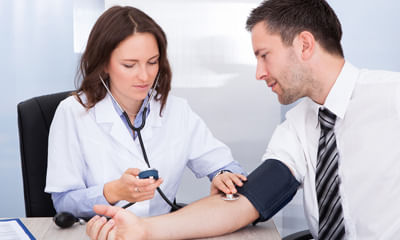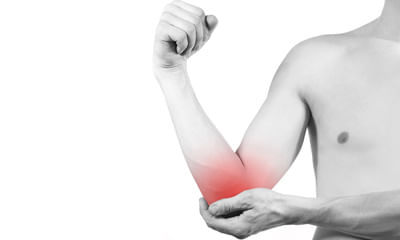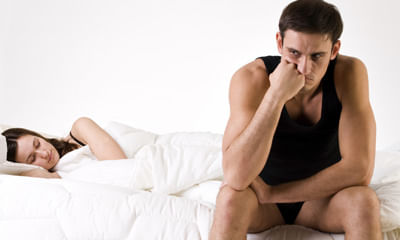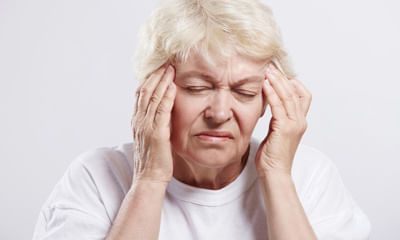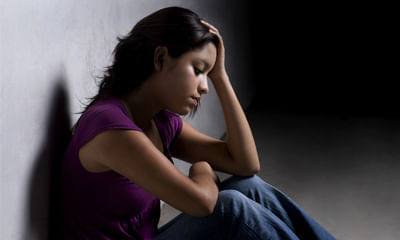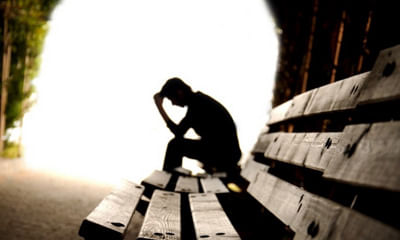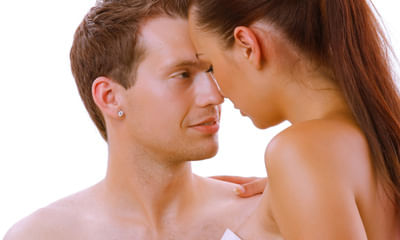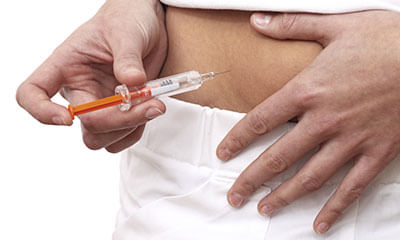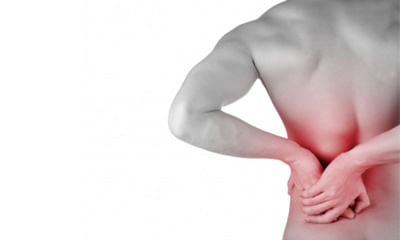What Is Normal Brain Pressure
My father 46 years old has recently suffered from brain stroke due to excess high blood pressure, got discharged this mo ...
Ask Free Question
Hi, lybrate user, •He should go for a walk for 20 mnts if he is able to move . •Should go for deep breathing excercises. •Consult, privetly for a faster recovery, till, then give him ,homoeo medicines , underlying; @ Rauwolfia Q -10 drops , thrice with 2tsfl of normal water . •Tke , care.
Hi doctor this question is about my father he 48 years old around 5-6 months ago he fell on the ground due to dizziness ...
Ask Free Question
The symptoms described for the 48-year-old individual, including dizziness, temporary darkness in front of the eyes, and an episode of falling, coupled with a retinal condition involving water (which might be indicative of some form of retinopathy or macular edema), suggest several potential medical conditions that need to be thoroughly evaluated by healthcare professionals. It's important to note that without a complete medical examination, including history, physical examination, and appropriate diagnostic tests, it's impossible to diagnose the condition accurately. However, I can provide some possibilities: orthostatic hypotension: this is a form of low blood pressure that happens when you stand up from sitting or lying down. It can cause dizziness and fainting. Vestibular disorders: issues with the inner ear and balance mechanisms can cause dizziness and a sensation of the environment spinning or moving. Transient ischemic attack (tia) or minor stroke: temporary blockage of blood flow to the brain can cause symptoms like dizziness, vision changes, and balance problems. Cardiac conditions: irregular heart rhythms or other heart issues can lead to reduced blood flow to the brain, causing dizziness and fainting. Retinal conditions: the mentioned 'water in retina' condition could be central serous retinopathy or another form of retinal detachment or edema. These can cause visual symptoms, but they are usually not directly associated with dizziness unless there's a broader underlying condition. Neurological disorders: various neurological issues can lead to dizziness and vision problems. Dehydration or electrolyte imbalance: sometimes, dehydration or imbalances in electrolytes can cause these symptoms. Anxiety or panic attacks: these can also manifest physically with symptoms like dizziness and altered vision, though they are typically accompanied by feelings of extreme anxiety. Given the recurrent nature of these episodes and the seriousness of potential underlying causes, it's crucial for this individual to seek further medical evaluation. This should ideally include a thorough cardiovascular examination, neurological assessment, and potentially, a referral to an ophthalmologist for the retinal issue. Diagnostic tests might include blood tests, ecg, echocardiogram, holter monitoring, mri or ct scan of the brain, and a detailed eye examination.
Dear Lybrate team, good day! kindly note since many months my both leg toe pains especially in the morning when I woke u ...
Ask Free Question
Burning foot pain is a common complaint, usually as a result of damage to the nerves of the foot or leg. It may develop due to an injury or medical condition either of which can cause compression of the nerves. Our nerves are the structures that carry messages to and from the brain. They tell our muscles when and how to work and are responsible for sensation including pressure and temperature. Damage to the nerves affects how these signals are transmitted. Burning type symptoms may be constant or come and go, vary in intensity and be accompanied by other sensations such as pins and needles or numbness. It all depends on what is causing the problem. Causes of burning foot painaccurate diagnosis of burning foot pain is vital to ensure appropriate treatment is started as soon as possible to prevent further damage. Here we will look at the most common causes of burning pain in feet, how they present, what causes them and how they are treated. Treatmentcold water foot baths, vitamin b supplements, comfortable footwear (mcr chapelles)
I got prostatitis few years back which got resolved but since then I am experiencing erectile dysfunction and also no mo ...
Ask Free Question
Hello- the causes of impotence varies. Erections result from a complex combination of brain stimuli, hormonal actions, and blood vessel and nerve functions. Any interference with with these factors can lead to impotence. Other contributing causes of impotency include alcohol, cigarettes, arteriosclerosis, sexually transmitted diseases, high blood pressure, hormonal imbalances (such as low levels of thyroid hormones) or abusive masturbation. In some instances, impotence results from the lack of sexual desire. This cause may be linked to the loss of attraction to a partner, but it can also result from depression, illness or medications. There are over 200 drugs that may cause impotence. Some of the most common are antidepressants, antihistamines, antihypertensives, blood-pressure medication, cancer chemotherapy, diuretics, narcotics, nicotine, sedatives, steroids, stomach acid inhibitors and ulcer medications. Fortunately, ayurveda has an answer to it irrespective of its cause.
From may 24 was having headaches and dizzy vertigo and body imbalanced. I'm taking medicine but not getting full relief. ...
Ask Free Question
Consult an ent specialist for vertigo. Check if your vestibular system is ok. Take tab zerodol sp bd tab betahistine 8 mg bd do contact me for further diagnosis and treatment if you feel necessary.
I am a 41 year old woman. I have suffered from generalized anxiety for years, treated with desvenlafaxine 50 mg/day and ...
Ask Free Question
Hi. I would suggest you visit your physician and check on the drug interactions. Pain killers and anti-anxiety pills can be addictive and you may develop tolerance. Additionally, you can experience deleterious side-effects. As mentioned earlier, psychotherapy can be helpful. The side effects you are experiencing can be worsened by an underlying disorder. For example, pain, sleep problems, fatigue, brain fog etc. Can signal anxiety. Emdr is known to be helpful for pain management and intense psychological distress. Relaxation techniques for your muscles which are in pain can mitigate these symptoms. Routine management and scheduling yoru activities can go a long way as well. Do let me know if you wish to talk.
Since last 3 years, whenever I am under stress or there is a important life decision ahead, I am tending to lose awarene ...
Ask Free Question
It could be tics or dissociative motor disorder they both get increased in stress. Please continue regular follow up withur doctor.
I got married recently around 7 months ago. Later I found that my wife was taking psychiatric medicines (benzex 2 mg and ...
Ask Free Question
Basically psychiatric drugs curb our daily activities. To involve in normal life she should skip to ayurveda or psychotherapy. Hypnotism is good for her. If you r interested you may contact to get free therapy.
My prolactin level is 17.96. Is it normal or not. Because my lab report recommend range is 3-14. But some lab report is ...
Ask Free Question
A prolactin (prl) test measures how much of a hormone called prolactin you have in your blood. The hormone is made in your pituitary gland, which is located just below your brain. When women are pregnant or have just given birth, their prolactin levels increase so they can make breast milk. But it’s possible to have high prolactin levels if you’re not pregnant, and even if you’re a man. Normally, men and nonpregnant women have just small traces of prolactin in their blood. When you have high levels, this could be caused by: prolactinoma (a benign tumor in your pituitary gland that produces too much prolactin) diseases affecting the hypothalamus (the part of the brain that controls the pituitary gland) anorexia (an eating disorder) drugs that are used to treat depression, psychosis, and high blood pressure chest injury or irritation (for example, scars, shingles, or even a bra that’s too tight) also, kidney disease, liver failure, and polycystic ovarian syndrome (a hormone imbalance that affects ovaries) all can affect the body’s ability to remove prolactin. You don’t need to make any special preparations for a prolactin test. You will get a blood sample taken at a lab or a hospital. A lab worker will insert a needle into a vein in your arm to take out a small amount of blood
Hello all doctor I am 38 years of male last year I had done mri ok spine it shows it shows d 6 and d7 space loss I am ha ...
Ask Free Question
Do’s and don’ts for neck pain: do’s •do turn to one side while getting up from supine position. •use hot pack for your neck. •use towel roll under the neck during supine lying. •use pillow of normal thickness in side lying position. •do isometrics for neck. •arms should be supported in one of the three positions:•™ hands in pocket ™ •hands on thighs/or on table. •™ hand behind back with elbow straight. •in order to avoid holding the head in the same position for long periods, take break while driving, watching tv or working on a computer. •use a seat belt when in a car. •use cervical collar in case of giddiness. •retraction of shoulders every hour: move shoulders backward. Don’t’s •don’t sleep straight. •don t’ bend your neck. •avoid hanging of arms. •avoid sitting sitting for prolonged prolonged period of time in stressful stressful postures postures. •do not lift heavy weights on head or back. •do not drive for long hours; take breaks. •avoid habit of holding the telephone on one shoulder and leaning at it for long time. •do not take many pillows below the neck and shoulder while sleeping, •in order to turn around, do not twist your neck or the body; instead turn around by moving your feet first. Many people experience neck pain because of poor posture and muscle strain. In these cases, your neck pain should go away if you practice good posture and rest your neck muscles when they’re sore. The most common types of mild to moderate neck pain usually respond well to self-care within two or three weeks. If you have minor neck pain or stiffness, take these simple steps to relieve it: apply ice for the first few days. After that, apply heat with a heating pad, hot compress, or by taking a hot shower. Exercise your neck every day. Slowly stretch your head in side-to-side and up-and-down motions. Use good posture. Avoid cradling the phone between your neck and shoulder. Change your position often. Don’t stand or sit in one position for too long. Get a gentle neck massage. Use a special neck pillow for sleeping. Short-term immobilization. Use a soft collar that supports your neck may help relieve pain by taking pressure off the structures in your neck. However, if used for more than three hours at a time or for more than one to two weeks, a collar might do more harm than good. Forward and backward tilt this can be done while you're seated or on your feet. Keep your moves slow and smooth. Start with your head squarely over your shoulders and your back straight. Lower your chin toward your chest and hold for 15-30 seconds. Relax, and slowly lift your head back up. Tilt your chin up toward the ceiling and bring the base of your skull toward your back. Hold for 10 seconds, then return to the start position. Repeat the set several times. Do it every day. Side tilt do this while standing, with your feet hip-width apart and arms down by your sides. Gently tilt your head toward your right shoulder and try to touch it with your ear. Stop when you feel the stretch. Don't raise your shoulder. Hold the stretch for 5-10 seconds, then return to the start position. Repeat on your left side. You can do several sets and work your way up to 10 repetitions. For extra stretch, put the hand on the same side of your tilted head on top of your head, and press lightly with your fingertips. Side rotation you can do this while seated or standing. Keep your head squarely over your shoulders and your back straight. Slowly turn your head to the right until you feel a stretch in the side of your neck and shoulder. Hold the stretch for 15-30 seconds, and then slowly turn your head forward again. Repeat on your left side. Do up to 10 sets. Press your palm against your forehead. Resist with your neck muscles. Hold for 10 seconds. Relax. Repeat 5 times. Do the exercise again, pressing on the sides (both the sides (right & left side) of your head. Repeat 5 times. Switch sides. Do the exercise again, pressing on the back of your head. Repeat 5 times.Hot or cold compresses. Applying heat or cold may help. "some people like heat, some like cold, deal says. "whatever feels best. Tens (transcutaneous electrical nerve stimulation). A tens system includes a small, battery-powered machine, connected by wires to a pair of electrodes. The electrodes are connected to your skinnear the pain source. A mild electrical current travels through your skin and goes along your nerve fibers. It may reduce pain by changing the way your brain perceives pain, experts say. One session takes about 15 minutes. "tens is sometimes helpful -- not a game-changer but worth a try, deal says. Massage. This may give your muscles relief. Get your doctor's approval first, only get massage from a qualified therapist, and make sure the therapist knows about your osteoporosis and your fracture. Osteoporosis exerciseexercisingregularlybuildsandstrengthensbones. Weight-bearingexercises—wherebonesandmusclesworkagainstgravity—arebest. Theseincludeaerobics,dancing, jogging,stairclimbing, tennis,walking, andliftingweights.peoplewhohaveosteoporosismaywant to attemptgentleexercise, such as walking, ratherthanjogging or fast-pacedaerobics, whichincreasethechance of falling. Exercisingthree to fourtimesperweekfor 20-30 minuteseachtimehelps. Osteoporosis treatmentthe treatment of osteoporosis involves reducing any of the factors contributing to poor bone health. Yosur doctor may advise you to address current exercise regime, review your medications or review current lifestyle factors that predispose you to osteoporosis. Your doctor may also advise you to increase your: calcium intake via your diet or with supplements. Calcium is used to build and maintain bone health. vitamin d intake via supplements or exposure to low levels of sunlight. Vitamin d is used to absorb calcium in the bone and regulate calcium in the blood. Tips for osteoporosisweight bearing exercise, such as walking, can help to strengthen bonesexercises to improve your balance and strength will help to prevent falls follow a healthy diet that includes enough calcium and vitamin duse this handy calculator to make sure you are getting enough calcium. Wear sensible, well-fitting shoes to avoid fallsavoid rugs and sloppy slippers – both can cause tripshave good lighting on your stairsget your eyesight checked regularly (free for people over 60) try to avoid heavy lifting – consider home delivery grocery shoppingthis is a general low back ache and for this you can follow these measures: one keep a pillow right under the knee while sleeping, next is you can keep ice in the painful area for about 5--10 minutes, if pain still persists you can stretch your body by twisting the waist on both sides how we used to do in the school drill similarly you can try which will help you relax as well will reduce the pain.

